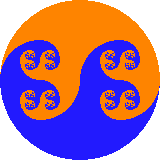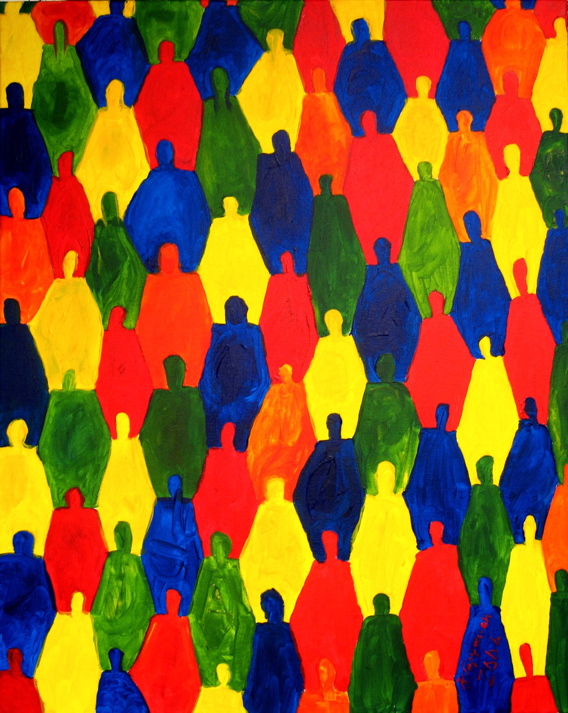

"Everybody's Hive"
Carlos Gershenson
2006.
Acrylic on canvas, 65x80 cm.
Merelo Guervós collection.
Mathematical explanation: This painting uses ideas of self-organization. Even when the tiling is periodic, the colouring patter isn't. I used local rules to determine which of the five colours to use in each tile, leading to an irregular, yet not random, colouring pattern. Each new tile to be coloured has a colour chosen randomly, constrained by the colours of its neighbours, not to have two tiles of the same colour touching each other. Since the minimum number of colours that could be used is four (leading to a regular colouring), adding a fifth colour allows nonperiodicity, yet constraining the choice of colours that result in local regularities. I say that the colouring is self-organizing because it would not be possible to determine the pattern globally, i.e. without actually doing it. With this method, certain harmony emerges from the local rules, without me having a design of the complete colouring scheme beforehand. Notice that the irregularity of the tiles (each one being distinct) also constrains the shape of its neighbours. Just like with the colouring, it could be possible to have a complete scheme for the painting beforehand, in this case making regular divisions in the plane. However, it was my intention not to do this, in order to have also self-organization of the tile shapes (e.g. the head of one tile determines the shape of the legs of the tile above it).
Ideological explanation: I use the tiling as a metaphor of our condition, where there is no space left between individuals, and stating that everything lies inside a social context. The colouring and shaping by local rules is a metaphor of how we affect each other: we are what we are depending on the people around us, who also are what they are depending on us. The percise shape and colouring of each tile is distinct, illustrating our imperfection and uniqueness. Still, all tiles are similar, finding a balance in the paradox of "all humans are equal, but all humans are distinct". This paradox is not contradictory, because we are equal in a human rights context, but distinct in many other contexts. The painting tries to capture both aspects of this duality.
I was inspired by Moorish patterns after visiting the Alhambra.
Back to Gallery